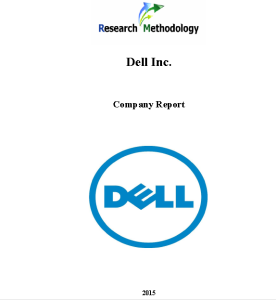
Dell Inc. is a global computer technology company that manufactures and sells PC, tablets, workstations and displays. Dell practices “Direct Business Model” that involves selling products directly to customers without intermediaries. Developed by founder and current CEO Michel Dell, this business strategy has proved to be highly effective in terms of gaining significant cost advantage in competition. Founded in 1984 in Texas, USA, Dell has emerged into one of the leaders in the global marketplace. Currently, the company employs 108,000 people globally and its portfolio comprises award winning products and services. Dell servers have been acknowledged as a product of the year in 2014 by CRN Test Centre and the company has been praised as a leader in Gartner’s Magic Quadrant for Modular Servers . Dell became a private company, as per shareholder agreement reached on September 12, 2013 and the company was acquired by its founder, Chairman and CEO Michael Dell in partnership with a global technology investment firm Silver Lake Partners. According to the agreement, Dell shareholders were provided USD 13.75 per common share and the company shares were delisted from NASDAQ Stock Market in October 29, 2013. There are evidences that after becoming a private company Dell’s current business strategy is associated with making a transition from PC assembler and seller to software developer, a strategy that proved to be successful with another global computer brand IBM. This report contains application of SWOT, PESTEL, Porter’s Five Forces and Value-Chain analytical frameworks towards the case study of Dell Inc. The report also comprises analysis of Dell’s marketing strategy and company’s approach towards Corporate Social Responsibility (CSR). 1. Introduction 2. SWOT Analysis 2.1 Strengths 2.2 Weaknesses 2.3 Opportunities 2.4 Threats 3. PESTEL Analysis 3.1 Political Factors 3.2 Economic Factors 3.3 Social Factors 3.4 Technological Factors 3.5 Environmental Factors 3.6…
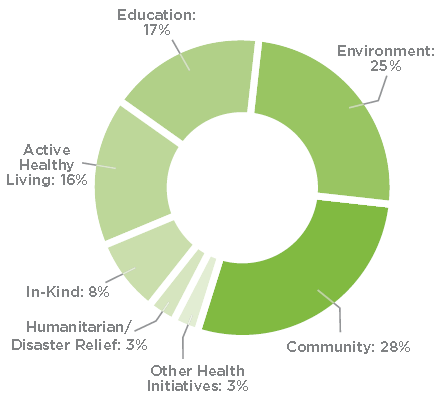
Coca Cola releases Sustainability Report that comprises the details of CSR programs and initiatives engaged by the company. Coca Cola aims to give back at least 1% of its annual income for charitable causes annually. The figure below illustrates the pattern of distribution of this fund in 2013. According to the latest Coca Cola Sustainability Report for 2013/2014 the major CSR programs and engagements initiated by the company include the following: Categories of CSR activities Coca Cola Performance Educating and empowering workers During the period of 2012-2013 Coca Cola is mentioned in 26 lists, including the World’s 25 Best Multinational Workplaces 2013 compiled by the Great Place to Work® Institute. Labor and human rights Company’s EthicsLine channel provides stakeholders an opportunity to inform perceived violations of Code of Business Conduct, Workplace Rights or any other violations in a secure and anonymous manner. In 2013, 44% of workforce in the US was multicultural and 1010 military veterans were hired during the year. Health and safety 100 out of 400 new beverage products introduced in 2013 are reduced-, low-, or no calorie. 94% of company-owned facilities comply with Coca Cola Workplace Rights Policy The rate of lost-time incident decreased in 2013, dropping to a low of 1.9 Environment a) energy consumption b) water consumption Energy efficiency improved by 20% compared to 2004 100 service vans in the US have been converted into efficient hybrid-electric vehicles Coca Cola has announced a program to reduce carbon footprint by 25% by 2020 Coca Cola has announced its commitment to balance its water usage by 2020. In 2013 the company has replenished an estimated 68% of the volume of its finished beverages and returned about 108.5 billion liters of water to communities and the nature. …
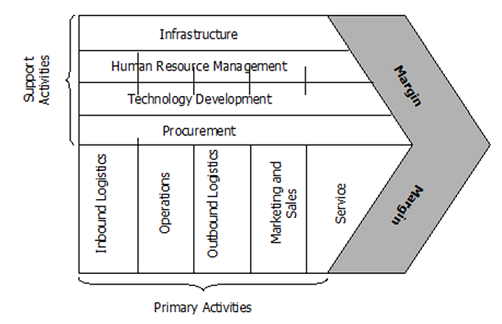
Value-chain analysis is an analytical framework that assists in identifying business activities that can create value and competitive advantage to the business. The figure below illustrates the essence of value chain analysis. Inbound logistics. Water is the main ingredient for all products manufactured by Coca Cola Company and the company occasionally faces significant challenges in accessing this particular raw material. Coca Cola uses high fructose corn syrup (HFCS) extensively and this raw material is purchased from US-based suppliers and delivered via trucks. There are also some ingredients that have to be sourced internationally. For example, orange juice and orange juice concentrate is sourced from Florida and Southern Hemisphere, particularly Brazil. For international purchases inbound logistics are facilitated via ships and trucks. Coca Cola values diversity among its suppliers. In 2013, $952 million were spent on diverse suppliers, an increase of 14.8% compared to the previous year. Operations. Coca-Cola operating segments are divided into the following 7 groups: Eurasia and Africa Europe Latin America North America Asia Pacific Bottling Investments Corporate The Coca Cola system is not a single entity from legal and managerial points of view. Coca Cola manufactures and sells concentrates, beverage bases and syrups to its bottling partners, maintains ownership of the brand and develops and applies marketing strategy. Bottling partners, entities that do not belong to Coca Cola, do manufacturing, packaging, merchandising and they distribute the final product to customers and vending partners. Outbound logistics. Coca Cola Company sells its products in more than 200 countries and understandably claims to operate the world’s largest beverage distribution system[1]. Distribution channels utilized by Coca-Cola consists of distribution operations operated or controlled by the company, independent bottling partners, distributors, wholesalers and retailers. The five major bottling partners listed in Table 3 accounted for 33% of the total unit case volume…
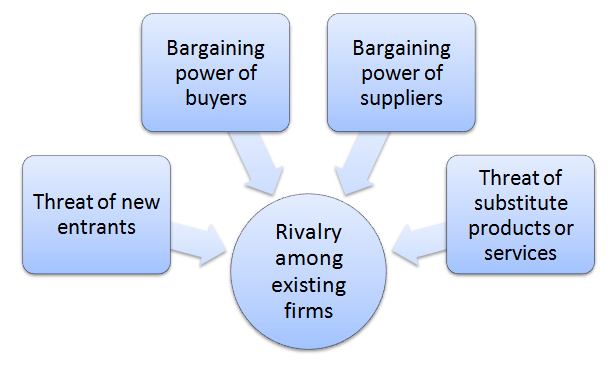
Porter’s Five Forces analytical framework developed by Michael Porter (1979)[1] represents five individual forces that shape the overall extent of competition in the industry. These forces are represented in figure below: Threat of new entrants in the industry is insignificant. This is because the global market of carbonated drinks is highly saturated and new entrants cannot benefits from the economies of scale extensively exploited by existing market players. Moreover, there is a substantial knowledge barrier in terms of being able to develop soft drinks that could successfully compete with industry leaders such as Coca Cola and Pepsi and the relevance of technological barrier can be assessed as substantial as well. Bargaining power of buyers is great and this power is fuelled by the availability of great choice of cola beverages. Moreover, there is no switching costs for customers and the price elasticity of products further increases buyer purchasing power. At the same time, the issue of Coca Cola addiction has surfaced in the media a number of times, addiction of Peter Lawrie, a professional golfer being a noteworthy exampe[2]. Accordingly, it can be argued that bargaining power of small segment of buyers who can be classified as ‘Coke addicts’ is not significant. Bargaining power of suppliers varies according to the type of supplier. There are few suppliers with great bargaining power such as Ajinomoto Co., Inc. and SinoSweet Co., Ltd suppliers of spartame, a non-nutritive sweetener and Nutrinova Nutrition Specialties & Food Ingredients GmbH, supplier of acesulfame potassium. Coca Cola operates Supplier Diversity Program that promotes diversity among suppliers for reportedly noble reasons, at the same time decreasing the bargaining power of each individual supplier. As it is illustrated in figure below, the volume of investment on supplier diversity has been consistently increasing for the last four years…. Coca Cola…

Effective marketing strategy has played a critical role for Coca Cola’s success in the global marketplace. The company has declared its total compliance with the following 4 principles of Responsible Marketing Policy: Choice – providing a great range of product options, so that customers can choose according to balanced diets and active lifestyles. Balance – encouraging the consumption of beverages in sensible manners and moderated amounts. Honesty – adhering to the principles of honesty and transparency in all marketing and sales activities. No marketing to children – marketing of any products should not be aimed at children under the age of 12. In addition to its own marketing initiatives, Coca Cola provides promotional and marketing services to distributors, bottlers and resellers on a discretionary basis. In 2014 marketing expenses of this category amounted to $7 billion respectively[1]. The company has announced ‘One Brand’ marketing campaign that is aimed to unite four different brands – Coca Cola, Diet Coke, Coca Cola Zero and Coca Cola Life under the umbrella of Coca Cola. The level of marketing spending to advertise lower sugar, no sugar and no calorie beverages has been doubled in 2015[2]. Advertising Coca Cola advertising strategy is boldly experiential with innovative design of posters and print and media advertising. The company is announced that media advertising investments will increase by $1 billion by 2016[3]. According to “One Brand” marketing campaign Coca Cola advertising via various channels will feature all four different brands of Coca Cola as illustrated in Figure 2 above. Viral marketing is accepted as an important element of the advertising mix by the company and it is extensively applied to promote specific marketing initiatives such as ‘Sharing a Can, personalization of Cola cans and bottles by printing names, as well as, “Sing For Me” campaign, an initiative that…
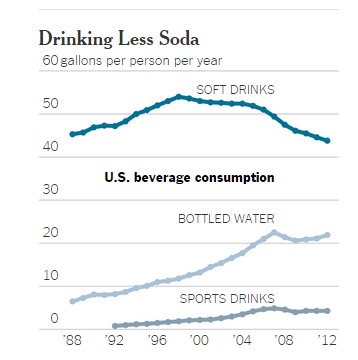
Political Factors Coca Cola is impacted by a set of political factors, both, in the US and abroad. These include, but not limited to the level of political stability in the country, impact of international pressure groups and domestic market lobbying groups and the government attitude towards the industry and the company. There are few specific instances that illustrate the impact of political factors on Coca Cola performance. “One Day without Coca Cola” campaign launched by University organizations of the Social Nicaraguan Movement was a protest against the US-led invasion of Iraq with an inevitably negative impact on Coca Cola revenues in respective markets[1]. Similarly, Israeli attacks on Gaza in 2014 have caused some of the businesses in Turkey and more than 100 hotels in Mumbai stop selling products of Coca Cola Company[2]. Economic Factors Coca Cola sales are impacted by a set of economic factors that beyond of company’s control. These factors include the level of economic growth in the country and in the industry, tax rates and currency exchange rates, interest rates, labor costs and others. The global economic and financial crisis of 2007 – 2009 is a relevant example of an economic factor that greatly impacted the majority of businesses around the globe. However, the crisis has impacted Coca Cola to a lesser extent compared to many other businesses. Its operating margin remained at industry-front 22% despite the crisis, although dividend yield was reduced to 2.6%[3]. Arguably, fluctuations in exchange rate is the most significant economic factor that has adversely impacted Coca Cola performance in recent years. For example, due to severe currency devaluation in Venezuela, Coca Cola’s reported profits in this market has to be reduced by 55% in the fourth quarter of 2014 and there are similar instances in other parts of the world[4].…

SWOT is an acronym for strengths, weaknesses, opportunities and threats related to organizations. The following table illustrates Coca Cola SWOT analysis: Strengths 1. Ownership of leading brands in soft drinks market segment 2. Brand value 3. Highly sophisticated distribution channel 4. Solid financial position Weaknesses 1. Lack of clear competitive advantage over PepsiCo 2. Brand image is associated with ‘high sugar’ carbonates 3. Lack of product diversification 4. Negative publicity Opportunities 1. Focusing on health & wellness 2. Engaging in product diversification and brand extension 3. Packaging innovation 4. Engagement in acquisitions Threats 1. Consumer avoidance from soft drinks due to health considerations 2. Loss of market share to PepsiCo 3. Negative publicity due to water usage patterns 4. Changes in currency exchange rates Coca Cola SWOT Analysis Strengths 1. The company owns and markets four of the five leading brands in the market – Coca-Cola, Diet Coke, Fanta and Sprite. As it is illustrated in Figure 1 below, in 2014, products belonging to Coca Cola Company possessed 36.1% market share in carbonated soft drinks segment in the USA. Significant market share is associated with a solid revenue stream that can be channeled to new product development and marketing initiatives to contribute to long-term growth prospects. 2. Estimated at $81.6 billion, Coca Cola brand value is the 3rd valuable brand in the world. This position provides the company a set of substantial benefits in terms of customer loyalty and bargaining power with suppliers. Moreover, a great brand value is a confirmation of efficiency of competitive advantage and it also provides grounds to increase profit margin. 3. Coca Cola Company has a highly sophisticated distribution channel that enables the sales of more than 2 billion unit cases of products across 28 countries and three continents. Coca Cola products are distributed via…
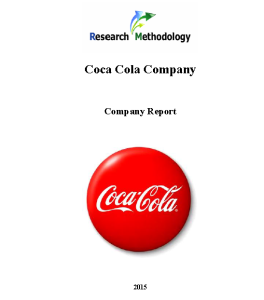
This report contains application of SWOT, PESTEL, Porter’s Five Forces and Value-Chain analytical frameworks towards the case study of Coca Cola Company. The report also comprises analysis of Coca Cola’s marketing strategy and company’s approach towards Corporate Social Responsibility (CSR). The world’s largest beverage company, The Coca Cola Company is owner or licenser of more than 500 non-alcoholic beverage brands. The company sells a wide range of beverages that include waters, enhanced waters, juices and juice drinks, ready-to-drink teas and coffees, and energy and sports drinks . Products belonging to Coca-Cola Company are sold in more than 200 countries around the globe since its incorporation in 1886. Incorporated in 1919, The Coca Cola Company offers well-known brands such as Coca-Cola, Fanta, Sprite, Minute Maid, Powerade, Del Valle, Schweppers, Aquariues and others. In addition to its core business of manufacturing and selling non-alcoholic drinks, Coca Cola Company is also engaged in some other affiliated businesses such as distribution of Monster Energy beverage drinks, products of DPSG brands and joint venture with Nestle S.A. to produce and distribute Nestea products in Europe, Canada and Australia. Coca Cola Company’s 2020 Vision is based on its mission that consists of three parts: a) to refresh the world, b) to inspire moments of optimism and happiness and c) to create value and make difference. Recently the company initiated a new marketing campaign ‘One Brand’ that aims to unite four different brands – Coca Cola, Diet Coke, Coca Cola Zero and Coca Cola Life under the umbrella of Coca Cola. TABLE OF CONTENTS 1. Introduction 2. SWOT Analysis 2.1 Strengths 2.2 Weaknesses 2.3 Opportunities 2.4 Threats 3. PESTEL Analysis 3.1 Political Factors 3.2 Economic Factors 3.3 Social Factors 3.4 Technological Factors 3.5 Environmental Factors 3.6 Legal Factors 4. Marketing Strategy 4.1 Advertising 4.2 Sales Promotion 4.3…

Biersteker (1995) explores apparent triumph of liberal economic ideas in the developing world by concentrating on the nature of change in economic thinking. According to this article dramatic changes in economic thinking in developing countries took place mainly during the period of 1980s and 1990s. Differences in perceptions between countries and their impact on implementing liberal economic ideas are stressed by Biersteker (1995) to explain variations on the levels of economic liberalisation amongst Latin American countries. Biersteker (1995) offers an interesting account of the impact of liberalism on developing countries. Specifically, Biersteker (1995) discounts the impact of following four factors in facilitating change in economic thinking – perception of superiority of liberal ideas by developing countries, exercise of power by international financial institutions such as IMF and the World Bank, intensifying forces of globalisation, and collapse of socialism. Instead, Biersteker (1995) offers explanation for change in economic thinking from four different perspectives: ideational, systematic, domestic interest, and international institutional perspectives. A noteworthy shortcoming associated with this approach is associated with being overly idealistic. While the author accepts this fact by stating that “each of these should be considered as an idealised construction” (Biersteker, 1995, p.181), nevertheless, the idealised approach undermines the level of practical relevance of the work. Reyes and Sawyer (2011) offer an alternative approach to the work of Biersteker (1995) by identifying perception of superiority of liberal ideas as the most significant factor fuelling change in economic thinking in developing counties during the last three decades of the last century. References Biersteker, T.J. (1995) “The “triumph” of liberal economic ideas in the developing world” in Global Change, Regional Response: The New International Context for Development, editor Stallings, B., Cambridge University Press Reyes, J.A. & Sawyer, C.W. (2011) “Latin American Economic Development” Taylor & Francis

Today many innovations are associated with businesses as opposed to individuals. There are several reasons behind this phenomenon. Rapid development of knowledge management practices and processes in companies can be mentioned as one of the primary reasons behind many innovations being associated with businesses as opposed to individuals. Levels of sophistications of knowledge management systems in organisations have been increasing with rapid paces during last several years and this tendency has had positive correlation with creativity and innovation in most organisations. This argument can be better explained by referring to the concept of knowledge life cycle. According to this concept, knowledge life cycle comprises capture, verification, codification, integration, synthesis, dissemination and utilisation stages. Towards the end of the last stage organisational knowledge has a great potential to be used to make innovations of products, services and processes through collaboration and teamwork. Senior level management in increasing numbers of businesses do understand the importance of creativity and ‘thinking outside of box’ in terms of producing innovative products and services and attempt to shape organisational culture accordingly. One of the most innovative companies of the present day – Google is a suitable case study to justify this point. Specifically, Google offices around the globe are famous for their unique, innovative and highly informal design to encourage creativity amongst employees. Moreover, Google practices ’20 per cent rule’ according to which employees are free to spend one fifth of their paid time at work doing activity of their choice that does not have to be aligned with the corporate strategy (Kotter, 2013). Such a move enables Google to introduce innovative products and services in a regular basis allowing the company to diversify to a great extent. Many other companies are also following this path to varying extents in terms of creating informal work environment…
